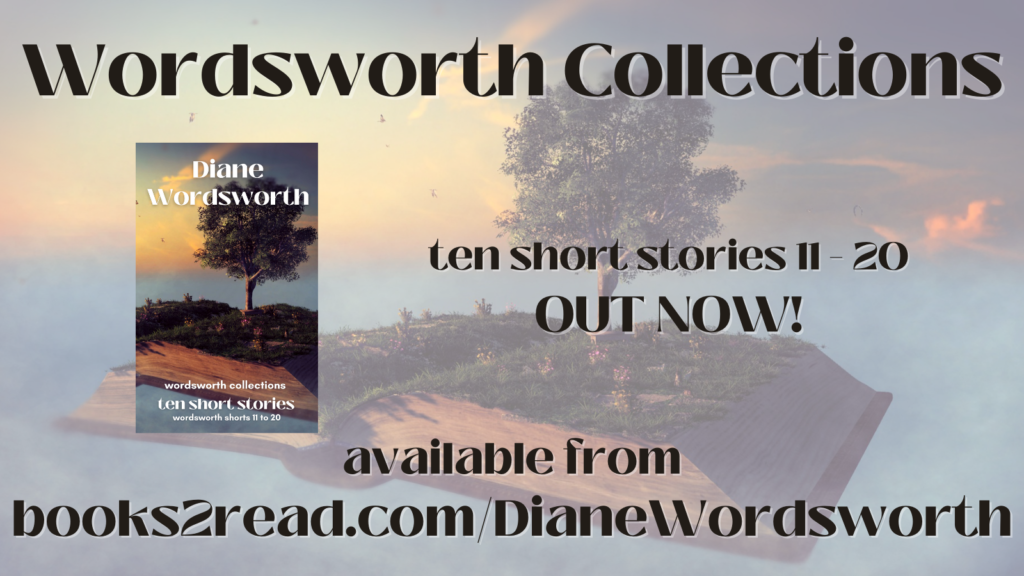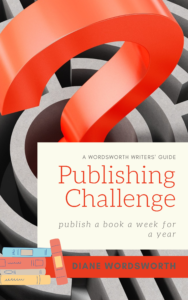
Chapter 14
It’s been 3 weeks since my last publication challenge post. This is because I was really busy over that period, apart from the last week when I finally got to work on my own stuff for a week.
I wasn’t idle, though. I still maintained my book a week challenge.
Publication Days!
Week 1, or 16 May, saw publication of After the Storm.

After the Storm is a story I wrote a long, long time ago. It went off on its rounds, but the only feedback I had was from one market who asked me to tweak it a little. I did the tweaking, but it was still rejected. I do like the story, though.
Week 2, or 23 May, it was the turn of The Battle of Killiecrankie.

The Battle of Killiecrankie is one I wrote for fun, again a long time ago. I think it went to just one magazine and it was rejected. I can’t remember the reason why. However, it’s a fun one and it will probably be the first in a series of stories featuring the same characters as I start to ramp up the short story-writing again.
This week, today, or 30 May, it’s the turn of Ten Short Stories: Wordsworth Shorts 11 to 20.

This is the second collection of 10 short stories recently repackaged or released as Wordsworth Shorts.
You can find all of my books on the BUY MY BOOKS tab on the blog, or you can go to www.books2read.com/DianeWordsworth.
Advance planning
Last time I shared some of the process of my publishing schedule. This time I’m going to talk about advance planning and filling gaps.
Looking ahead, I’d spotted a large gap in my publishing schedule and I needed to plug it. I found a pile of short stories that, so far, I’d done nothing with, even though some of them had first drafts completely written. I also thought about the writers’ guides.
I needed to write Project Management for Writers: Gate 2 but I already had complete versions of Diary of a Pussycat and Diary of a Cool Cat. At first I tried to fit in the writing job (the project management book), but in order to meet the first gap, there was a lot of cramming in there. I really, really didn’t want to cram anything, so it was back to the drawing board.
I chose one of the short stories and started to re-write that, and then I went to see how far I was through the 2 Diary of… books.
Well, I was delighted to see that I’d edited the hard copy of Diary of a Pussycat right up to the last 2 chapters. So, straight away, that one was next on the list. Then I added the short story I’d chosen to rewrite. Great, that filled in 2 empty spots. Then I went into the project management system to add those tasks to the relevant projects, and to ensure I still allocated time to what still needs doing to them.
The first thing I did on the project management system was start to fill in the components of writing the next project management book. This included duplicating some sections from Book 1 (which will be updated to suit Book 2), as well as sending the book to the poet for his input, as well as 2 lots of proofreading and revisions.
The tasks for this project are as follows:
- PMWG2: duplicate introduction
- PMWG2: duplicate ‘the gates’
- PMWG2: write Chapter 1
- PMWG2: write Chapter 2 (etc, to Chapter 15 on this occasion)
- PMWG2: duplicate end matter
- PMWG2: proofread
- PMWG2: revisions
- PMWG2: send to co-author
- PMWG2: more revisions
- PMWG2: more proofreading (cycle back to ‘more revisions’ until satisfied)
- PMWG2: prepare for publication
- PMWG2: published!
For variety, to keep me interested, I only have one task per day, so I’m always working on several different projects at once. (I have similar tasks for the ghostwriting and editing gigs.)
Here, PMWG2 is the abbreviation for the title: Project Management for Writers: Gate 2. As I say, some of the sections are duplicated from Book 1, but these will be adapted to suit each book and at the end, when I publish the Omnibus, they’ll only appear once. Revisions have 2 entries because I always proofread hard copy and then transfer the proof corrections to the electronic version.
If this was a brand-new project, I’d also have a task for setting up the Scrivener binder. For the project management books, the binder’s already there.
Working backwards, and leaving a clear fortnight before projected completion and final publication, I filled in another gap in my publishing schedule. And that left me with 2 more gaps between the story I’d decided to finish and publication of the next project management books.
The next thing I did, then, was go through the pile of short stories I’d found that still need work and I added two of the best-written into the remaining spaces, and I added those tasks to the project management planner too. If I don’t already have a short story written, but it’s a topic I’d like to set a story around, then I schedule in the process for writing a new story from scratch.
For each story, the tasks are:
- SS [short story title] – BRAINSTORM
- SS [short story title] – OUTLINE
- SS [short story title] – WRITE #1
- SS [short story title] – WRITE #2
- SS [short story title] – PROOFREAD
- SS [short story title] – SUBMIT/PUBLISH
- SS [short story title] – RECORD SUBMISSION
Here, SS is the abbreviation for Short Story. I also have the market abbreviated, if I’ve allocated one to target (not shown here). The process is the same for existing stories too, omitting the bits I’ve already done.
The brainstorm session is where I look for topical dates and noodle with ideas. Usually, I’ve already done the actual date work ahead of time so that the topics are percolating in the back of my mind. This is simply where I go through them again and decide which ones I’m going to write.
The brainstorming stage is also where I decide whether to add the story to a series or write it as a complete standalone. The projected length of the story depends on how much time it takes to outline, write and proofread. And, because they’re so short, the proofreading task also includes revisions. Then I either send it to a market or I publish it myself.
The short stories (or articles, if I decide to write one) are written or polished back-to-back with no time in between other than weekends or holidays, although I will work then if I get the urge to or if I’m lagging behind. I do, however, like to leave a week before finishing a story and proofreading it. So the proofreading task for, say, short story #1 appears after the draft 2 task for short story #2, and so on, and the remaining tasks follow on from there. At some point I’ll be writing a writing challenge book about writing a story a week.
If a story is brand-new, then I might look for suitable images on Pixabay so that I can slant the story to reflect the image. If the story is an old one, I’ll look for suitable images on Pixabay to reflect the story. Then I take the chosen image to Canva, where I create the cover. I’ll cover cover-creation another time.
I’ve stopped creating the short stories in Scrivener, reverting instead to the tried-and-tested method I’ve been using for years, and that’s have a different notebook for each part (brainstorming, outlining and 1st draft). These notebooks, or notepads when it comes to writing the 1st draft, contain all stories in the order that they’re written, with an index at the front showing which stories are in which books/pads. Once a book/pad is filled up, I start a new one. This keeps everything together.
Scrivener’s great for longer material, but often with a short story, I want to take a notebook with me somewhere and sit and write it by hand. This keeps me connected to the story.
All of this took me up to 25 July being the next blank space on the calendar. As I have a couple of months now to start planning my work and my time much better than I have been, I’m happy to leave that there. As I’ve also started to schedule in magazine writing, there might be some rejects, hopefully with feedback, by then too.
So, that’s another aspect of my publishing process. Phew! There’s quite a lot there, and this is why I need, use and love these project management methods.
Over to you…
Do you have any questions? How is your publishing challenge going?





